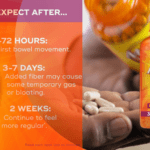Having a well-developed chest not only enhances your physique but also contributes to overall upper body strength. The chest muscles, specifically the pectoralis major and pectoralis minor, play a crucial role in pushing movements and provide stability to the shoulder joints. To achieve an impressive chest, it’s essential to incorporate a balanced and effective workout routine targeting these muscles.
In this article, we will explore the best chest workout that combines compound and isolation exercises, proper form and technique, rest days, nutrition, and the benefits of a strong chest.
Understanding the Chest Muscles
Before diving into the workout routine, it’s important to understand the anatomy of the chest muscles. The chest is primarily composed of the pectoralis major, a large fan-shaped muscle located on the front of the chest, and the pectoralis minor, a smaller muscle situated underneath the pectoralis major. These muscles are responsible for movements such as pushing, pressing, and adduction of the arms.
Importance of a Strong Chest
A strong chest not only enhances aesthetics but also improves functional strength. A well-developed chest enables you to perform daily tasks more efficiently, such as pushing heavy objects, participating in sports, and maintaining better posture. Additionally, a strong chest provides a foundation for upper body strength and helps prevent muscle imbalances.
Warm-up Routine
Before beginning any workout, it’s crucial to warm up properly to prepare your muscles and reduce the risk of injury. A chest warm-up routine may include exercises like arm circles, shoulder rotations, and light cardio exercises such as jumping jacks or jogging. Spend 5-10 minutes on warming up before moving on to the main workout.
Compound Exercises for the Chest
Compound exercises engage multiple muscle groups, including the chest, and are excellent for building overall strength and muscle mass. Here are three effective compound exercises for the chest:
Barbell Bench Press
The barbell bench press is a classic exercise that targets the entire chest, along with the triceps and shoulders. Lie on a flat bench, grip the bar slightly wider than shoulder-width apart, lower it to your chest, and then press it back up. Aim for proper form and gradually increase the weight as you progress.
Dumbbell Flyes
Dumbbell flyes primarily target the outer and upper regions of the chest, providing a good stretch and contraction. Lie on a flat bench with a dumbbell in each hand, palms facing each other. Lower the dumbbells out to the sides in a wide arc until you feel a stretch in your chest, then bring them back up, squeezing your chest muscles.
Push-ups
Push-ups are a versatile exercise that engages the chest, shoulders, triceps, and core muscles. Start in a high plank position with your hands slightly wider than than the width of your shoulders. Lower your chest toward the ground, keeping your body in a straight line, and then push back up. Modify the intensity by performing push-ups on your knees or elevating your feet.
Isolation Exercises for the Chest
Isolation exercises target specific areas of the chest and help to develop symmetry and definition. Here are three effective isolation exercises for the chest:
Cable Crossovers
Cable crossovers focus on the outer chest and provide a great contraction. Stand in the middle of a cable machine, holding the handles with an overhand grip. Step forward slightly, keeping your feet stable, and pull your hands together in front of your chest, squeezing your pecs. Return to the starting position and repeat.
Chest Dips
Chest dips primarily target the lower chest muscles. Find parallel bars or use a dip machine, gripping the handles firmly. Lower your body by bending your elbows, leaning forward slightly, until your shoulders are below your elbows. Push back up to the starting position, focusing on the contraction in your chest.
Incline Dumbbell Press
Incline dumbbell press targets the upper chest. Set an adjustable bench at a 30-45 degree incline. Lie on the bench, holding dumbbells above your chest with palms facing forward. Lower the dumbbells to the sides of your chest, then push them back up, focusing on the contraction in your upper chest.
Incorporating Variation in Your Chest Workout
To continuously challenge your chest muscles and prevent plateauing, it’s important to incorporate variation in your workout routine. This can include changing the order of exercises, adjusting the tempo, using different grips, or implementing advanced techniques like drop sets or supersets. By introducing variety, you stimulate muscle growth and keep your workouts interesting.
Proper Form and Technique
Unleash the Full Potential of Your Chest Workouts: Mastering Form and Technique for Optimal Results and Injury Prevention. Ensure a stable and balanced body position, use a full range of motion, control the weight throughout the movement, and avoid excessive arching of the back or bouncing the weights. If needed, seek guidance from a qualified fitness professional to ensure proper form.
Frequency and Rest Days
To allow for optimal muscle recovery and growth, it’s important to have rest days between chest workouts. Aim to train your chest 2-3 times per week, with at least 48 hours of rest between sessions. Overtraining can lead to muscle fatigue, lack of progress, and increased risk of injury. Listen to your body and adjust the frequency accordingly.
Importance of Nutrition
To support muscle growth and recovery, it’s essential to maintain a balanced diet rich in protein, carbohydrates, and healthy fats. Protein plays a crucial role in muscle repair and growth, so include lean sources such as chicken, fish, eggs, and tofu. Additionally, consume complex carbohydrates for energy and ensure an adequate intake of vitamins and minerals through fruits and vegetables.
Benefits of a Strong Chest
Developing a strong chest offers numerous benefits beyond aesthetic appeal. A strong chest improves upper body strength, enhances athletic performance, promotes better posture, and reduces the risk of muscle imbalances or injuries. Moreover, a well-developed chest boosts self-confidence and improves overall body composition.
Common Mistakes to Avoid
When it comes to chest workouts, avoiding common mistakes is crucial for maximizing results and preventing injuries. Here are some key mistakes to keep in mind:
- Using Excessive Weight with Poor Form: One of the most common mistakes is using weights that are too heavy for proper form. It’s important to prioritize good technique and control throughout the movement rather than lifting excessively heavy weights. This ensures that the target muscles are effectively engaged and reduces the risk of strain or injury.
- Neglecting Full Range of Motion: Another mistake is not utilizing the full range of motion during chest exercises. Partial reps or limited movement can limit the muscle activation and overall effectiveness of the exercise. Make sure to fully extend and contract the chest muscles for optimal stimulation.
- Ignoring Proper Breathing Technique: Breathing plays a crucial role in maintaining stability and power during chest workouts. Many people hold their breath or forget to exhale during the exertion phase of the exercise. Remember to inhale during the eccentric (lowering) phase and exhale during the concentric (lifting) phase to enhance performance and oxygenation.
- Lack of Warm-up: Skipping the warm-up routine is a common mistake that can increase the risk of injury. A proper warm-up increases blood flow to the muscles, improves flexibility, and prepares the body for the upcoming workout. Include dynamic stretches and light cardio exercises to warm up the chest muscles and surrounding areas.
- Overtraining the Chest: While it’s important to train the chest regularly, overtraining can hinder progress and lead to fatigue or injury. Allow sufficient rest and recovery time between chest workouts to give the muscles time to repair and grow. Balancing chest exercises with workouts targeting other muscle groups promotes overall strength and prevents muscle imbalances.
- Focusing Solely on Flat Bench Press: The flat bench press is an effective exercise, but solely relying on it can limit overall chest development. To achieve a well-rounded chest, incorporate a variety of exercises targeting different angles and muscle fibers. Include incline presses, decline presses, and flyes to engage the upper, lower, and outer regions of the chest.
- Neglecting Proper Shoulder Positioning: Improper shoulder positioning can place unnecessary strain on the shoulder joints and detract from the effectiveness of chest exercises. Ensure that your shoulders are pulled back and down, with the chest lifted, during each exercise. This helps maintain stability and proper alignment throughout the movement.
- Forgetting to Stretch and Cool Down: After completing your chest workout, don’t forget to stretch and cool down. This helps reduce muscle soreness, improve flexibility, and promote faster recovery. Stretching exercises such as chest stretches and shoulder rolls can alleviate tension and prevent muscle tightness.
By avoiding these common mistakes, you can optimize your chest workouts, minimize the risk of injuries, and achieve better results in terms of strength, muscle growth, and overall chest development.
Conclusion
A well-rounded and effective chest workout routine is essential for developing a strong and impressive chest. By incorporating a combination of compound and isolation exercises, focusing on proper form and technique, allowing for sufficient rest and recovery, and maintaining a balanced diet, you can achieve significant improvements in your chest strength and aesthetics.
Remember to listen to your body, progress gradually, and adjust the intensity and frequency of your workouts as needed. Stay consistent, stay motivated, and enjoy the journey to a stronger and more defined chest.
FAQs
- Q: Can I do chest workouts every day?
- A: It’s generally not recommended to work out the same muscle group, including the chest, every day. Muscles need time to recover and rebuild. Aim for 2-3 chest workouts per week with rest days in between.
- Q: How long does it take to see results from chest workouts?
- A: The time it takes to see results from chest workouts can vary depending on various factors such as genetics, diet, and consistency of training. With regular workouts and proper nutrition, you can start noticing improvements in strength and muscle definition within a few weeks.
- Q: Should I use machines or free weights for chest exercises?
- A: Both machines and free weights have their benefits. Free weights like dumbbells and barbells allow for more natural movement patterns and engage stabilizing muscles. Machines can provide controlled resistance and are suitable for beginners or those with specific limitations.
- Q: Can women benefit from chest workouts?
- A: Yes, women can benefit from chest workouts just like men. Strengthening the chest muscles helps improve posture, upper body strength, and overall physique. It’s important to note that women typically have less muscle mass and different hormonal profiles, so their training approach may differ.
- Q: What if I have a shoulder or wrist injury?
- A:If you have a shoulder or wrist injury, it’s crucial to consult with a healthcare professional or a qualified trainer before performing chest exercises. They can provide appropriate modifications or alternative exercises to avoid aggravating the injury and promote safe and effective training.






